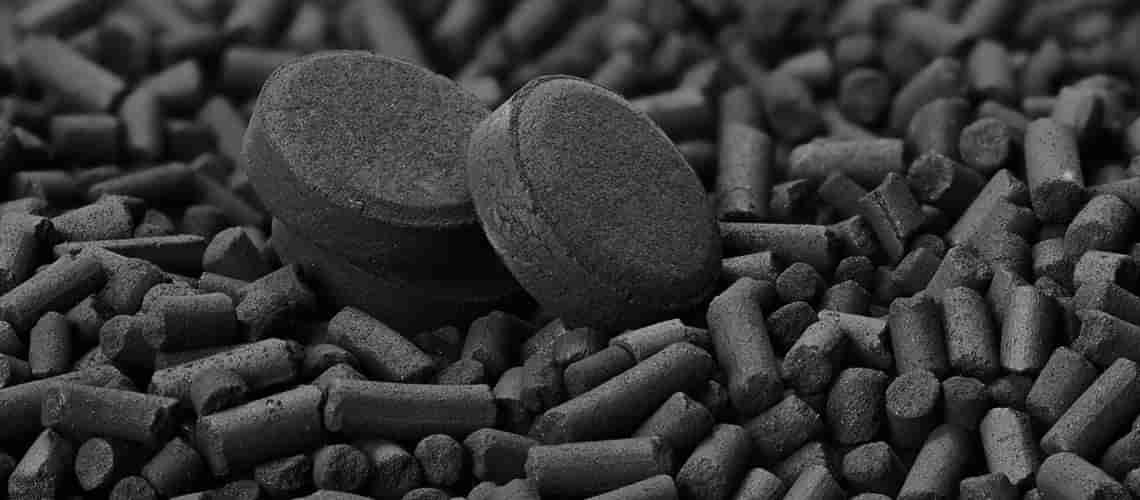- About
- Industries
- Products
- Wastewater Treatment
- Conventional Effluent Treatment: AQUASEP
- Toxic Refractory < 60,000 COD Removal: Catalytic Hydro-oxidation CHD-Ox
- Wet Air Oxidation for TOXIC > 60,000 COD : THERMOX
- Nanobubbles in Water Treatment: NANOPOREX-E
- Chemical-Free Cooling Tower Technology – A Sustainable Solution: ZEPHYR
- MVR for ZLD: Vapozem
- Membranes in wastewater Treatment: PROMEM
- TSS removal and Product recovery using Ceramics: PORESEP
- Heavy Metals and Trace Contaminant removal using Resins: SORBION
- Improving Efficiency of your sand bed filters: NANOMATRIX
- Choosing the Right technology for Wastewater treatment: Wastewater Treatability Studies’
- Reduce/Recover Oil from Wastewater: DISORB
- Produced Water Treatment: PWT
- Non Biofouling Membranes in wastewater Treatment: PROMEM-B
- Advanced Bioaugmentation Culture: BIOPORE
- Cavitation using Ultrasonics: RUSONICS-E
- Oxygen Generator System for Industries: OXYLIFE
- Process Solutions
- Precious Metal catalyst Filtration: CONTUFILT-M
- Activated Carbon Filtration: CONTUFILT-AC
- Raney Nickel Catalyst Filtration: CONTUFILT-RN
- Hot Gas Filtration: CONTUFILT – MH
- Biosolids removal using ceramics: PORESEP
- MVR for ZLD: VAPOZEM
- Ion Exchange-based RESINS: SORBION
- Dehydrating solvents by Zeolite Membranes: SOLVOSEP
- HiGee Continuous Distillation: ROTASEP
- Molecular Separation by Membranes: PROMEM
- Filtration & Separation
- Precious Metal catalyst Filtration: CONTUFILT – M
- Activated Carbon Filtration: CONTUFILT-AC
- Raney Nickel Catalyst Filtration: CONTUFILT-RN
- Hot Gas Filtration: CONTUFILT – MH
- Ceramic Dynamic Membrane Filtration: PORESEP
- MVR for ZLD: Vapozem
- Nano-Bubbles Improve Process Efficiency: NANOPOREX
- Alternate to Continuous Distillation / Rectification: ROTASEP
- Liquid-Liquid Extraction Mixer Settler: SEPARIX
- Ion Exchange-based RESINS: SORBION
- Pervaporation: Dehydrating Solvents and Separating Mixtures: SOLVOSEP
- Cartridges & Filter Bags: FLOWSEP™
- Molecular Separation by Membranes: Recovery and Isolation: PROMEM
- Colour / Organics / VOC Removal: CARBOSORB
- Oxygen Generator System for Industries: OXYLIFE
- RUSONIC – Sonochemistry
- Magnetic Separator Technology: MAG-Filt
- Wastewater Treatment
- Resource
- Contact Us
Case Study: Enhancing Distillery Performance Through Process Re-Engineering
Top Posts
5 Applications of Nanobubbles in Agriculture
How to Increase Yield Without Using Fertilisers?
Process Optimisation and Capacity Doubling in Cane Syrup/B Heavy Molasses Based Ethanol Plant – A Case Study from NSL Sugars Ltd., Beed, Maharashtra
This case study details a comprehensive process optimisation initiative undertaken at a 150 KLPD ethanol distillery based on cane syrup and B-heavy molasses.
The plant, operated by NSL Sugars Ltd., was consistently operating below capacity at 90 to 100 KLPD due to multiple technical bottlenecks. Key challenges included spent wash loss at the analyser column bottom, mechanical seal failures in the analyser condensate pump, and carryover from the fermented wash to the pre-rectifier.
Through targeted engineering interventions—such as column internals redesign, heat exchanger integration, operating mode shifts, and piping modifications—plant capacity was successfully increased to 200 KLPD.
The revamp resulted in major energy and water savings, along with a dramatic improvement in equipment reliability.
This study serves as a benchmark for sustainable capacity augmentation and energy efficiency in ethanol distilleries utilising existing infrastructure.
Background
Jay Mahesh Sugars Unit-III of NSL Sugars Ltd. operates an ethanol plant with a design capacity of 150 KLPD. However, plant output was limited to 90–100 KLPD due to operational and mechanical inefficiencies.
Challenges identified
- Excessive spent wash losses at the analyser column bottom
- Frequent seal failures in analyser condensate pumps leading to unscheduled downtime
- Carryover of fermented wash into the pre-rectifier column causing process imbalance
Optimisation approach
- Redesign and fabrication correction of the degasser column internals
- Replacement and redesign of analyser column trays and internals
- Installation of a new beer heater on the analyser vapour line to improve heat integration
- Re-arrangement of vapour and liquid lines to streamline process flow
- Shift of pre-rectifier column operation from vacuum to pressure mode
- Modifications to reboiler heat exchangers to suit the new pressure mode
- Raising the analyser condensate tank to meet NPSH requirements and eliminate pump cavitation
- Addition of fermenters to meet increased fermented wash demand capital investment
- An additional investment of INR 10 crores was made to execute the revamp.
Results achieved
- Plant capacity increased from 100 KLPD to 200 KLPD
- Additional ethanol output of 100,000 LPD generating revenue of INR 66 lakhs per day or approximately INR 19.8 crores per month
- Steam consumption reduced by 0.6 kg per litre of ethanol, resulting in a saving of 120 MT per day or 3,600 MT per month
- Cooling water consumption reduced by 337.5 m³/h and power consumption by 35 kWh, resulting in monthly power savings of 25,200 units
- Soft water usage reduced by 144 m³/day through cooling tower optimisation
- Complete elimination of seal failures in analyser condensate pump post re-arrangement
- Specific power consumption nearly halved due to throughput increase within the same installed power
Conclusion
This case demonstrates that with targeted debottlenecking, thermodynamic reconfiguration, and utility optimisation, significant performance improvements can be achieved in molasses-based ethanol distilleries. The initiative at NSL Sugars Ltd. is a replicable model for increasing capacity and efficiency in India’s distillery sector without new greenfield investment.
Learn more about the technology.
Related Posts
LinkedIn Feed
Want to learn more about the technology?

Industries
Wastewater Treatment
Separation Sciences
Contact
Sign in for latest updates
Stay informed with the latest updates from Diva Envitec! Sign up for our newsletter to receive exclusive news, insights, and case studies directly to your inbox.

Copyright © 2024 Diva Envitec
Terms of Service
Privacy Policy
Industries
Wastewater Treatment
Separation Sciences
Contact
Sign in for latest updates
Stay informed with the latest updates from Diva Envitec! Sign up for our newsletter to receive exclusive news, insights, and case studies directly to your inbox.


